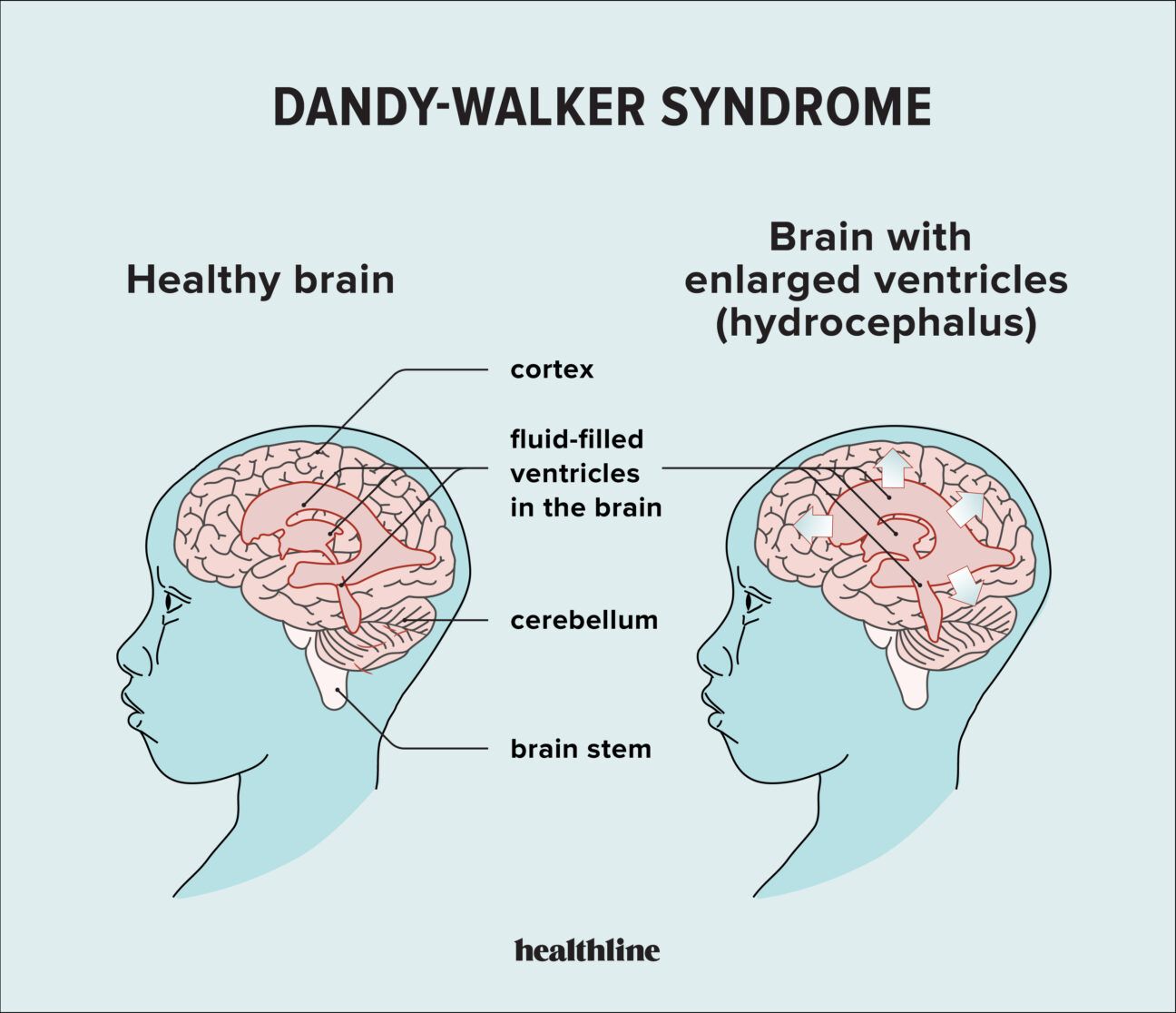Dandy-Walker syndrome can cause balance issues and difficulty controlling movements. It’s characterized by a small cerebellum and excess fluid in the space near the cerebellum.
Dandy-Walker syndrome (DWS) is a rare condition present at birth in which the cerebellum in the brain does not develop as expected. This can cause issues with balance and controlling movements.
For people with DWS, portions of the cerebellum may never grow or will be much smaller than typical. Extra fluid may also fill up in the spaces in the brain. This can lead to an increased head size and extra pressure on the brain, which is life threatening.
Sometimes, prenatal testing can detect DWS. Between
DWS is considered the same as Dandy-Walker complex, which can include several variants. Dandy-Walker

Symptoms of DWS in babies may include:
- slow development of motor skills
- difficulty controlling movements
- large head size for their age
In older children, symptoms of DWS may
- headaches and dizziness
- vomiting
- irritability
- irregular eye movements
- difficulty controlling movements and balancing
The exact cause of DWS is not fully understood. Sometimes, doctors can see certain anatomical changes during ultrasound in the second trimester.
Many genetic abnormalities have been
In addition to genetics, other factors may increase the risk of DWS.
Large population-based
- diabetes developed during pregnancy
- history of infertility
- certain viral infections contracted during pregnancy
- environmental exposure to toxins during pregnancy
- being of non-Hispanic, African descent
These maternal factors are only associated with a slight increased risk of DWS. The chance of having a baby with DWS is still very low.
Although there’s no way to prevent DWS, you can talk with your doctor about anything to avoid during pregnancy and what you can do to promote healthy fetal growth.
What’s the difference between Dandy-Walker complex and DWS?
“Dandy-Walker complex” is an umbrella term for
Doctors may identify a heightened chance for DWS if genetic testing identifies abnormalities.
DWS can sometimes be identified while a baby is still growing in the womb through ultrasounds or a fetal MRI.
Treatment for DWS focuses on managing structural changes in the brain and any symptoms. Early treatment and intervention are crucial to improve health outcomes and a better quality of life.
Doctors may recommend surgery to remove some of the extra fluid and relieve pressure on the brain. Special tubes or shunts are typically placed as part of this process.
Physical and occupational therapy can help with some of the physical challenges. Speech and language therapy can also be helpful in some cases.
Medications can help manage conditions such as seizures or ADHD as a result of DWS.
While some people with DWS experience physical and intellectual disabilities, others have no or mild symptoms.
The quality of life with DWS largely depends on:
- the size of the cerebellum
- how much the cerebellum has developed
- whether any extra fluid is present in and around the brain
- whether additional pressure is being placed on the brain
Some possible complications related to DWS
- seizures
- difficulties learning to walk
- impaired balance
- spinal changes
- cognitive and learning difficulties
In addition to affecting quality of life, DWS may also shorten life expectancy. About
However, a
Dandy-Walker syndrome (DWS) is a congenital condition in which the cerebellum in the brain does not develop as expected. This can cause issues with balance and controlling movements.
Surgery to reduce the amount of fluid in the brain and physical therapy may help manage some symptoms.
Detecting DWS can begin during early pregnancy. Sometimes, doctors can identify the condition in ultrasounds before a baby is born.
While there is no cure, doctors can treat some of its symptoms and help answer any questions about what life with this condition may look like.
